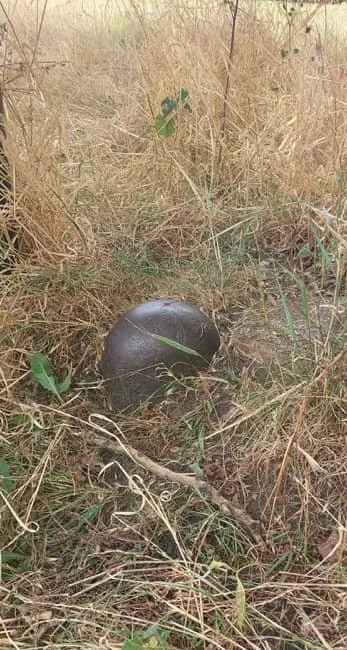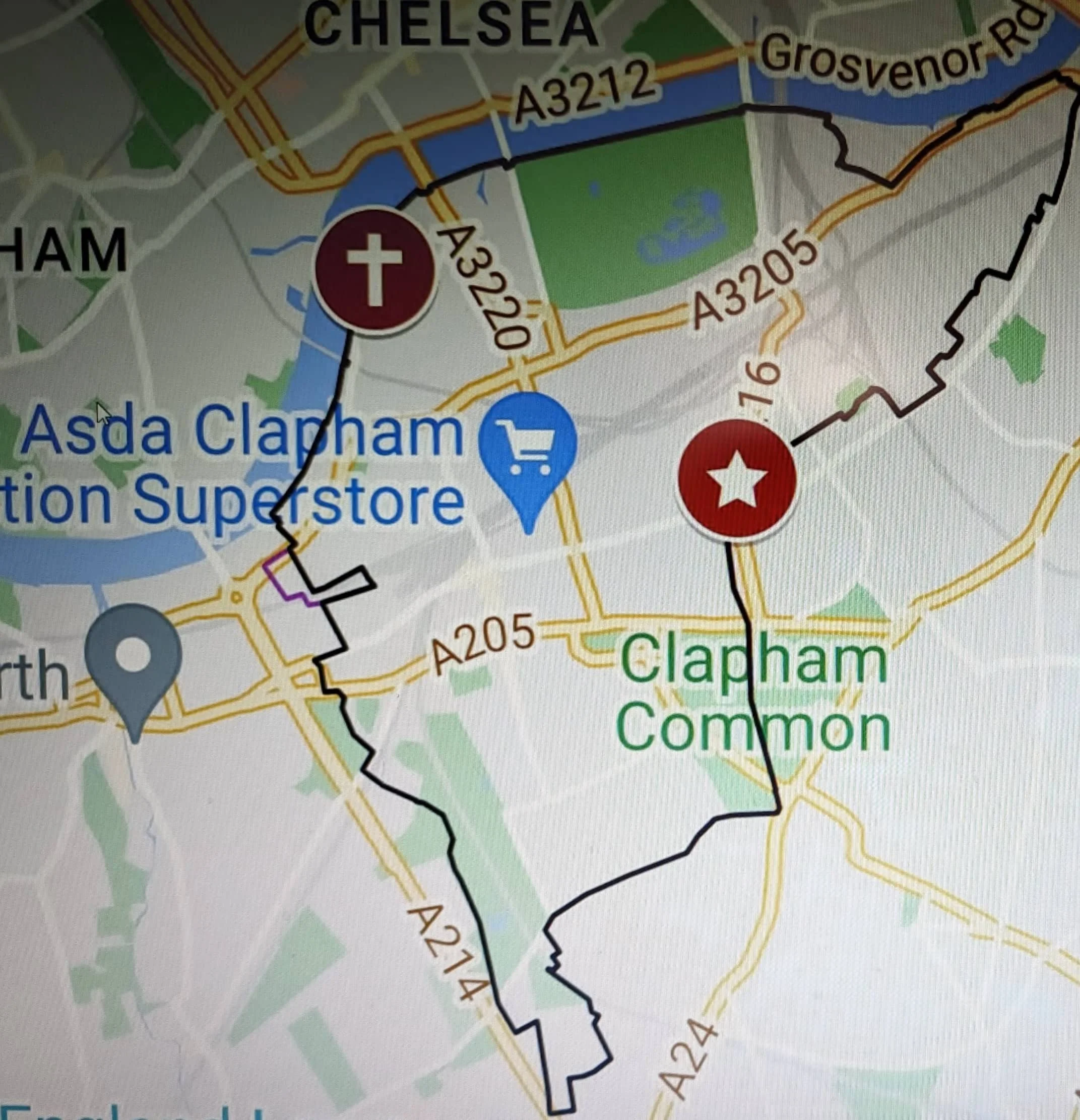Beating the Bounds
By Sue Demont
UPDATE: Beating the Bounds will be reprised on Sunday, 4 May. To learn more about the history of Beating the Bounds and what the walk is all about, read on.
On 5 May 2024 , a fine Sunday, an adventurous group of nearly 40 took part in Beating the Bounds. While not everyone made the full circuit, all enjoyed themselves, perhaps especially those with a willow wand to give each boundary marker the traditional thwack. The walk was enhanced by short talks at key points along the way: Hilaire and Jeanne Rathbone each spoke about the rural past of Battersea including the famous asparagus beds, Nine Elms Station, the Gas Works, Nine Elms Baths, and Charlotte Despard. Hilaire read her poems on asparagus and Despard. Philip Boys explained the original parish boundaries and how and why they followed the route they did, using maps to illustrate.
If you would like to try the route yourself, here are the map and directions used on the day. (Sorry, no speakers provided.)
Map and directions here
Reviving an Anglo-Saxon practice
Back in July, inspired by local heritage expert Philip Boys’ fascinating research, an intrepid group of Battersea Society members and Friends of Wandsworth Common set out to try and replicate the ancient parish tradition of Beating the Bounds. This custom dates right back to Anglo-Saxon times and continues to operate in a few country parishes and even the odd London borough today. Its original purpose was to mark out the parish boundary by walking around it, using greenery or sticks to beat the boundary posts and stones that delineated the route.
Finding and documenting boundary markers. Photo by Stephen Midlane
The Parish Dial magazine of 1862 features an entertaining account of one such occasion in Battersea, where it was customary to beat the bounds of the original Battersea Vestry district every three years. Starting at Battersea Square, a large number of local schoolboys carrying ‘white wands’ were marshalled to walk alongside the churchwardens and other parochial officers. Other dignitaries like the Juer and Poupart families, not to mention John Buckmaster, also turned out to encourage the walkers. The highlight of the outing appeared to be the refreshments provided on Wandsworth Common, which saw a sudden influx of enthusiastic bounds - beaters who proceeded to consume industrial quantities of bread, cheese and ham - not to mention beer!
Collaborative effort by the Battersea Society and Friends of Wandsworth Common
Our walk was a more sober affair, but still a lot of fun. Six BS members, the Chair of the Friends of Wandsworth Common (FOWC) Heritage Group and Tiger the dog set out from St Mary’s Church with the aim of completing as much of the 11-mile circuit as we felt able. The first stage along the riverbank through Battersea Park was very pleasant, but once we hit the new road layouts at Nine Elms things got a little trickier and rather less pleasant. After much criss-crossing we eventually found ourselves back in more interesting territory, particularly once we left Wandsworth Road. There had been no boundary markers up until this stage but the garage where we turned off is called Boundary Autos.
Our first official boundary post materialised in a narrow alley through which we gained access to some attractive terraced streets before hitting Heathbrook Park en route for Park Town. Queenstown Road also provided some well-preserved boundary markers dated 1866 and there were many more to come as we headed up to Clapham Common.
Battersea and Clapham boundary markers, Queenstown Road. Photo by Carol Rahn
On Clapham Common we were met by Richard Fox, Co-Chair of FOWC who distributed willow wands to add authenticity. Sadly, no free refreshments were provided but the café by the bandstand made a welcome pit stop before we tackled the interesting task of locating the boundary markers lost in the undergrowth to the south and west of the bandstand. It was rather easier to spot markers along Nightingale Lane, but puzzlingly these were erected by the London County Council, not the Battersea Vestry.
Nearly buried boundary marker on Windmill Drive Photo by Stephen Midlane
The next leg was of limited interest apart from the surprise we had when we realised just how far south the historic borough of Battersea used to go (perhaps the name Boundaries Road ought to have given us a clue). We then doubled back to Bellevue Field on Wandsworth Common, noting more boundary markers and admiring the beautiful ‘boundary oak’; here we said goodbye to three of our number (well done Jenny Sheridan, Carol Rahn and Richard Fox) leaving the remaining five plus the intrepid Tiger to complete the circuit.
Surprising southern extent Google map
We continued to Wandsworth Common Northside, where we were intrigued to see a little parish marker on the wall of two of our members’ houses! We next descended via Harbut Road to a little-known subway, from which to our surprise we emerged into a small ‘pocket park’ where someone was keeping chickens! Truly rus in urbis, and a significant contrast with the dual carriageway of York Road which had to be crossed so that we could regain the river.
By now there was definitely weariness, but also a sense of the ‘home straight’ and we enjoyed the relative tranquillity of the river for our hike back to St Mary’s. On arrival willow wands were cast aside and the completists - Clare Graham, Sally Sellers, Dave Rathbone, Stephen Midlane and Sue Demont, plus Tiger of course - made for Battersea Square for a welcome cup of tea/bowl of water. The circuit took us about six hours compared with eight in 1862, though our Victorian forebears may have spent longer on refreshments…




